Analyzing Intel Core M Performance: How 5Y10 can beat 5Y71 & the OEMs' Dilemma
by Brett Howse & Ian Cutress on April 8, 2015 8:00 AM ESTCinebench R15 Multi-Threaded Results
Looking at a multi-threaded run of Cinebench, the devices which will perform the best are going to need to have enough thermal headroom to keep all of the cores working at a good pace. All of these devices have four logical cores mapped to two physical cores via Hyperthreading, all of which are run at maximum load for the duration of this test.
The Core i5 once again has no issues maintaining its high CPU frequency, even though the overall SoC temperature does get higher than the single-threaded run. The Dell Venue 11 Pro tablet though starts off really reaching for the stars, but quickly must throttle back until it finds a consistent range that allows it to stay within its cooling constraints. The Yoga 3 Pro is similar, but quickly falls back due to the 65°C limit placed on the processor by the manufacturer. The ASUS UX305 performs just as well in this test as the last, with a very consistent CPU frequency, despite the temperatures getting a bit higher than the last run.
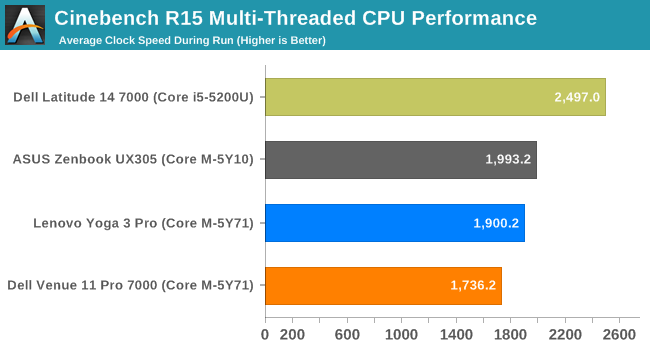
When it comes to average CPU frequency, both the Lenovo Yoga 3 Pro and the Dell Venue 11 Pro once again end up falling behind the ASUS and its much lower turbo speed in this test, though not by a huge margin. The ASUS averages the highest CPU frequency of the Core M contenders just like in the single-threaded workload, with the Lenovo less than 100MHz behind it, and the Dell Venue a ways back again. Neither of the 5Y71 devices turbo much over the 5Y10 in this test though.
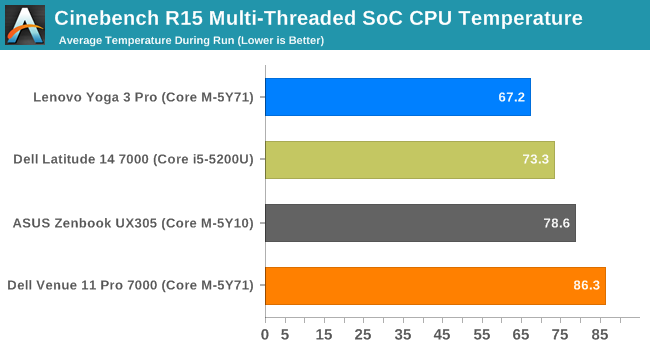
Looking at the temperatures, you can see just how conservative Lenovo has been with the Yoga 3 Pro. The overall SoC temperature is quite a bit lower than all of the other devices when the device is under load. The active cooling and low SoC temperatures help the Yoga 3 Pro to keep a cool exterior to the device.
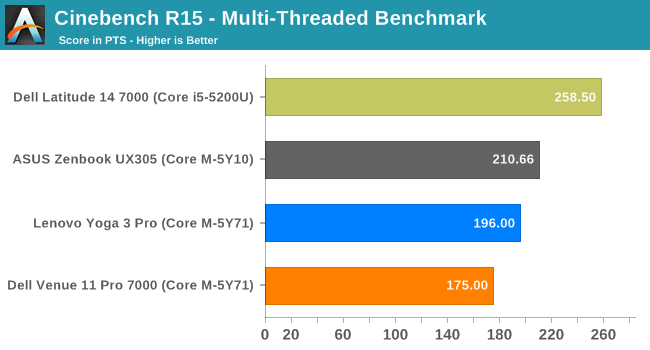
Now we come to the end result of this workload. The 5Y10 device handily outperforms both of the higher ranked models. Unsurprisingly it comes no where near the Core i5, but looking at the CPU frequency graph really demonstrates why it scores higher. Both of the 5Y71 have a lower average score, but unlike the single-threaded result, neither of them can sustain a CPU frequency past the frequency of the ASUS very much.


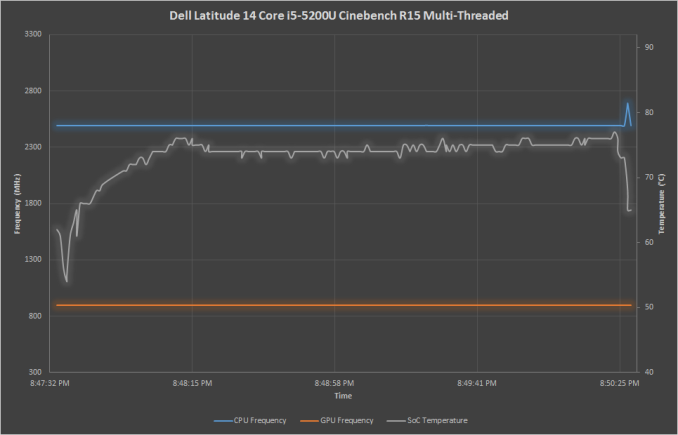
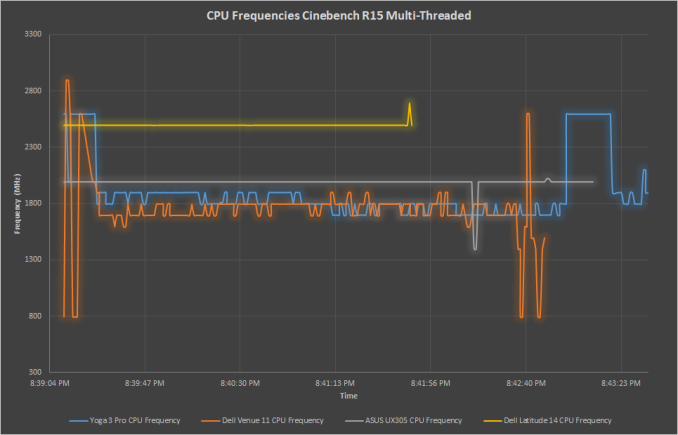
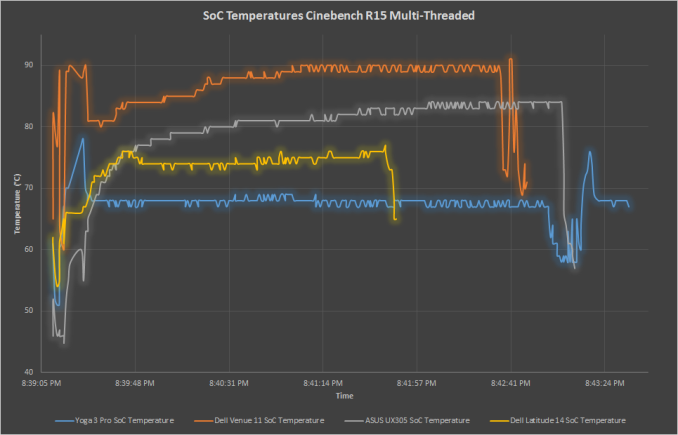








110 Comments
View All Comments
wintermute000 - Friday, April 10, 2015 - link
I actually want to see comparisons with desktops (esp older ones like Sandy era)ToTTenTranz - Wednesday, April 8, 2015 - link
Is there a review of the Dell Venue Pro 7000 coming up?In Europe, that tablet is priced similarly to the non-Pro Surface 3, so it would be interesting to make a comparison between a Core M and a Cherry Trail X7 device in a similar form factor regarding performance and battery life.
Brett Howse - Wednesday, April 8, 2015 - link
Yes.Daishi83 - Wednesday, April 8, 2015 - link
How about the T300 Chi? Preferably with FHD displayBrett Howse - Wednesday, April 8, 2015 - link
I'm but one man, but it is on my radar.kyuu - Wednesday, April 8, 2015 - link
It seems to me that the issue with the Yoga isn't poor cooling per se, but the inexplicable decision to have a target CPU temp of 65 degrees under load. If they allowed it to go up to 90 as the other devices do, it would almost certainly be the best performer.dusk007 - Thursday, April 9, 2015 - link
I would prefer it the way it is. Maybe it would be good if the user could decide by switching power plans. Not sure how it works.But generally I would not do much work that requires sustained performance on such a hybrid yoga. It is good for bursty workloads and stays cool even on high load flash website like a twitch high resolution stream (which heats my 15" MBP quite a bit). If it gets the work done while being cool to touch it is better. If you put it on a table it can be quite hot as long as the keyboard is reasonably cool. But pick it up and use it actually on your lap in normal or tablet mode, that 65C temp limit is a godsend.
It theory that should be in the windows power plan so one can just switch it to something else when performance means more than cool operation. I think in such a notebook performance should take a back seat.
vegemeister - Friday, April 10, 2015 - link
Increasing the max temperature wouldn't make it run any hotter unless you actually needed the performance.tsk2k - Wednesday, April 8, 2015 - link
Good read. I'm curious to see whether skylake core M improves much over this when it launches later this year.Crunchy005 - Wednesday, April 8, 2015 - link
Performance gains between archs in the same TDP...I feel between 1-5%? Haven't seen any huge performance gains in a long time just minor improvements.